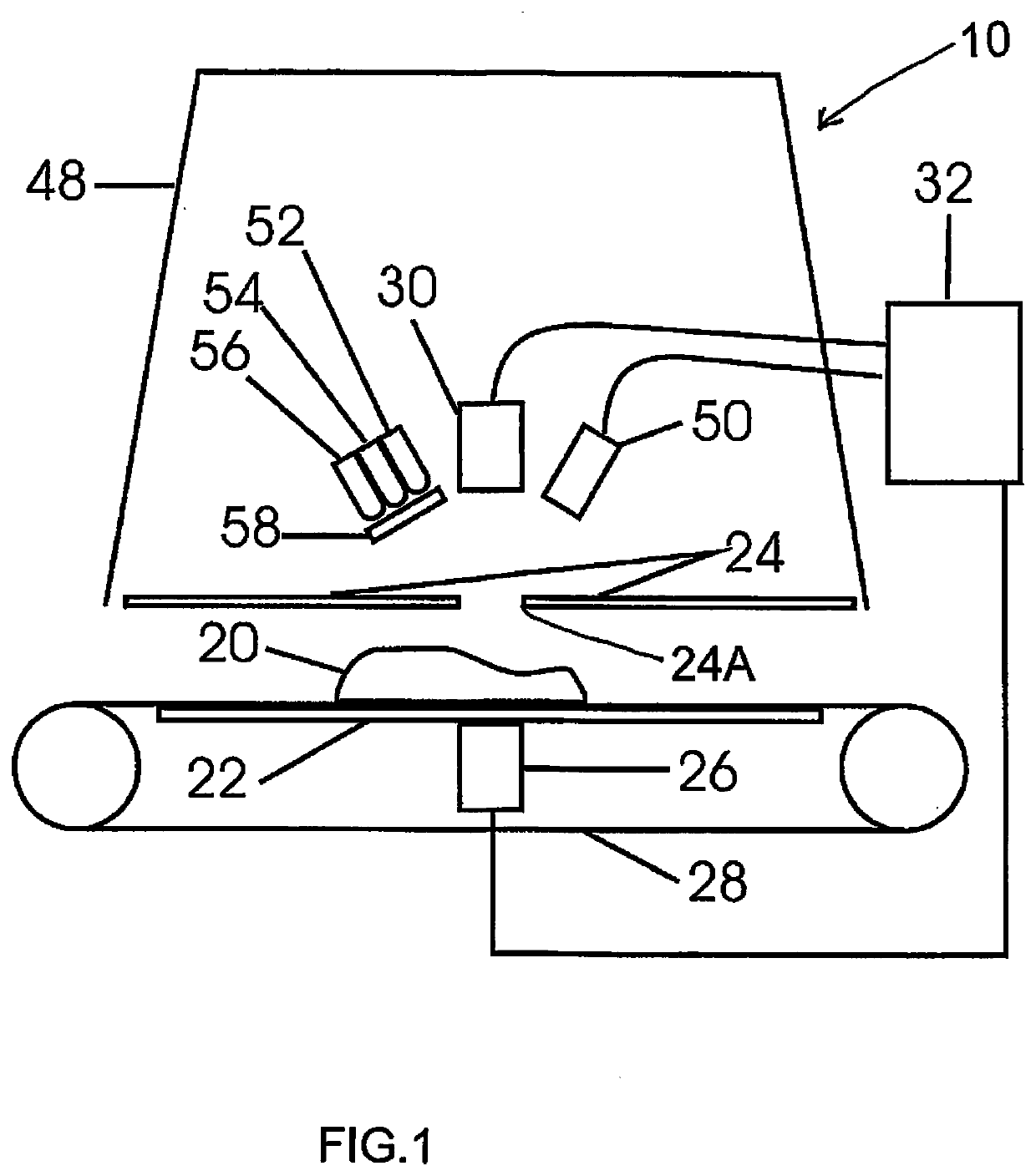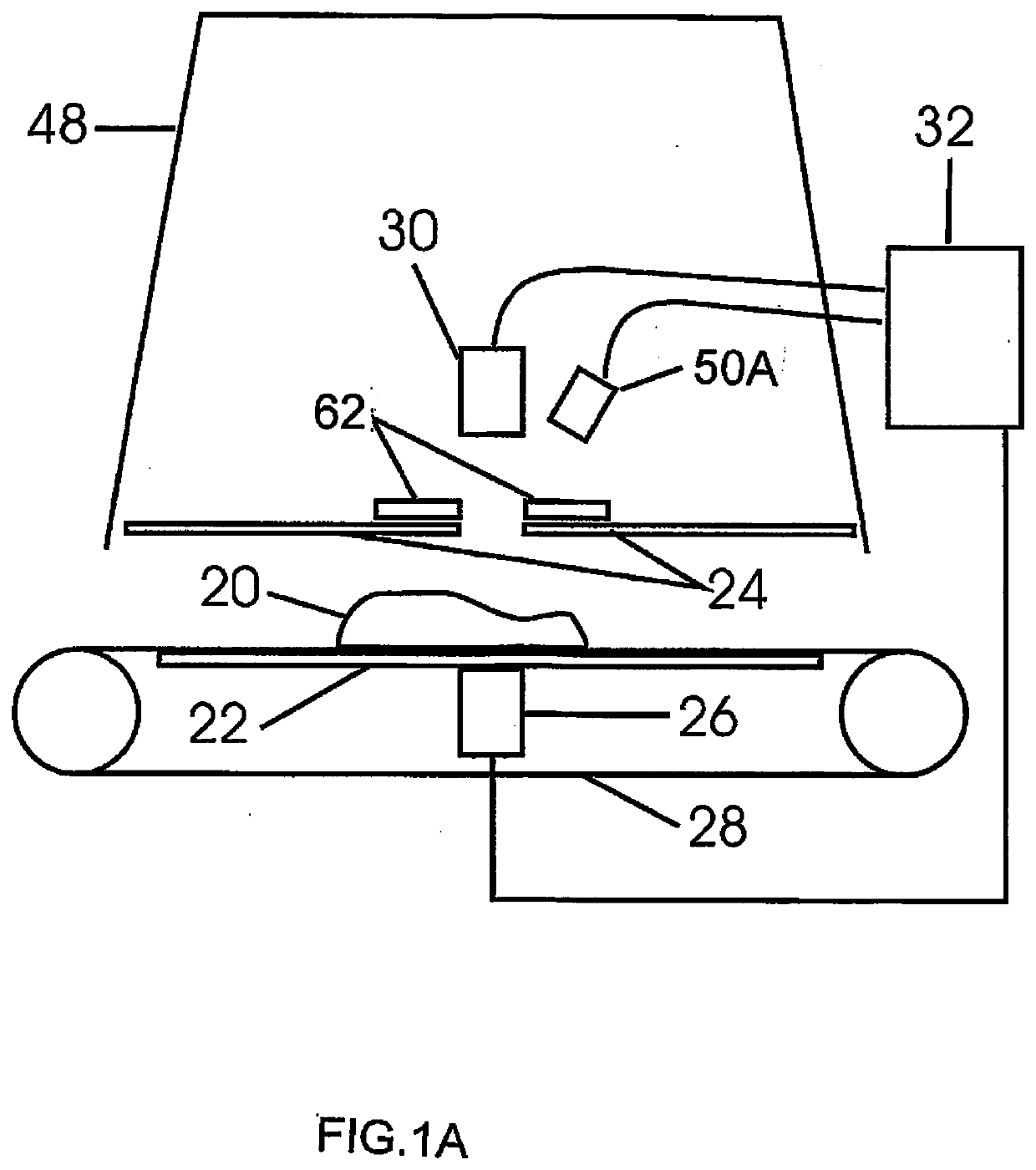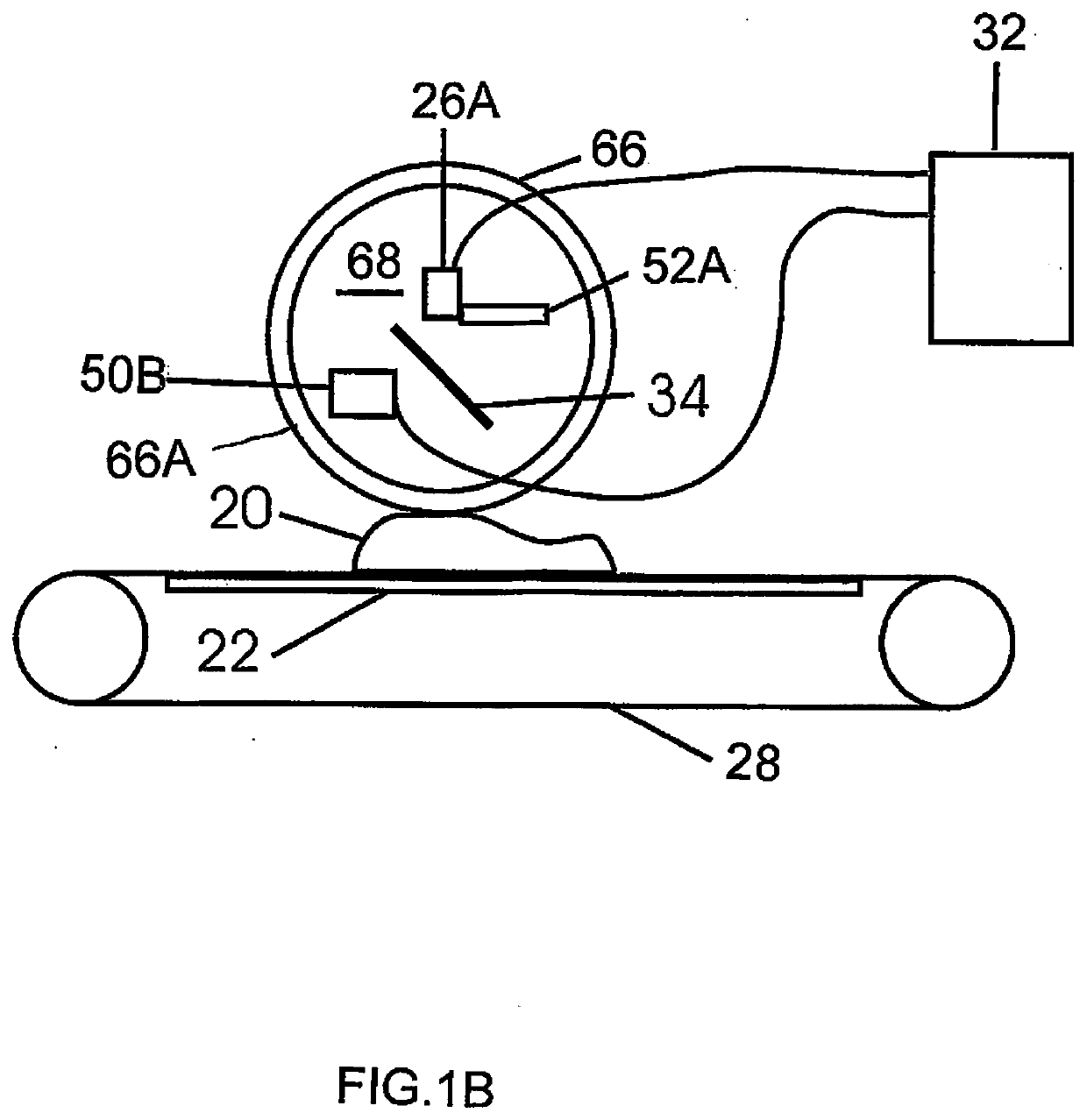Method for Bone Scan in Meat
a bone scan and meat technology, applied in the field of bone scan in meat, can solve the problems of biomolecules present, bone fragments pose both a regulatory risk and a litigation risk to food processing operations, and human health risks, and achieve the effects of preventing abrasion, minimizing or eliminating specular reflectance, and high probability of presen
- Summary
- Abstract
- Description
- Claims
- Application Information
AI Technical Summary
Benefits of technology
Problems solved by technology
Method used
Image
Examples
Embodiment Construction
[0071]The arrangement described herein provides methods for the detection of foreign material on the surface or in the bulk of food products with a combination of spectral imaging and ultrasound measurements. Very loosely spectral imaging is used to detect foreign material proximate to the surface and ultrasound is used to detect foreign material within the sample bulk. The sample is irradiated by light and reflected light or Raman scattered light measured to give a set of amplitude data points. The sample is similarly irradiated by ultrasound and reflected sound waves give a set of amplitude data points, which include temporal delay. These spectral and acoustic data points are then processed by statistical methods to derive a set of vectors in n-dimensional space. These vectors are indicative of the presence or absence of defects. Typically the vectors indicate the presence of bone, cartilage, fat, flesh (meat or muscle in the narrow sense), or skin in the sample, and thus the pres...
PUM
| Property | Measurement | Unit |
|---|---|---|
| wavelength range | aaaaa | aaaaa |
| wavelength range | aaaaa | aaaaa |
| wavelength range | aaaaa | aaaaa |
Abstract
Description
Claims
Application Information
 Login to View More
Login to View More - R&D
- Intellectual Property
- Life Sciences
- Materials
- Tech Scout
- Unparalleled Data Quality
- Higher Quality Content
- 60% Fewer Hallucinations
Browse by: Latest US Patents, China's latest patents, Technical Efficacy Thesaurus, Application Domain, Technology Topic, Popular Technical Reports.
© 2025 PatSnap. All rights reserved.Legal|Privacy policy|Modern Slavery Act Transparency Statement|Sitemap|About US| Contact US: help@patsnap.com



